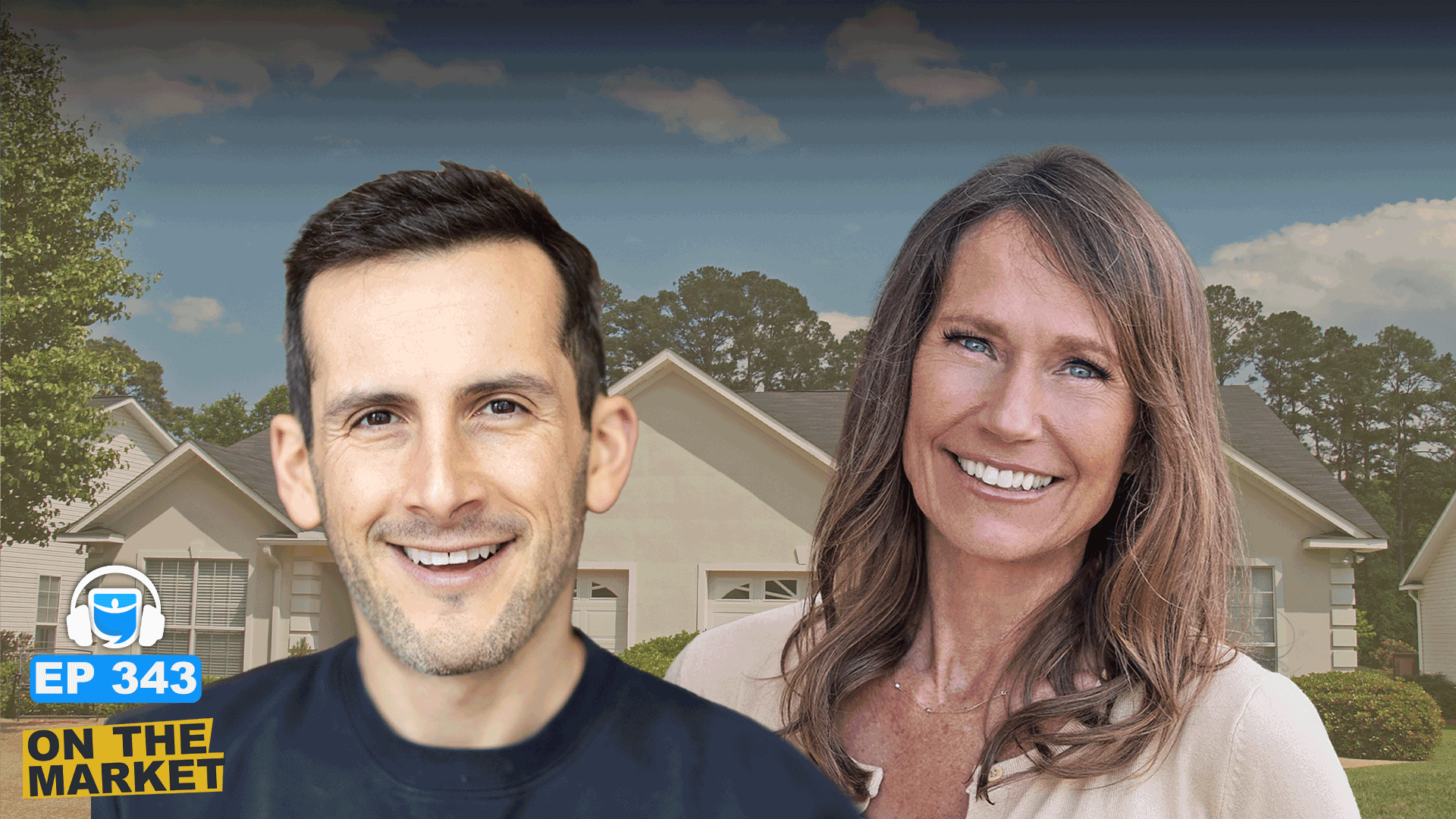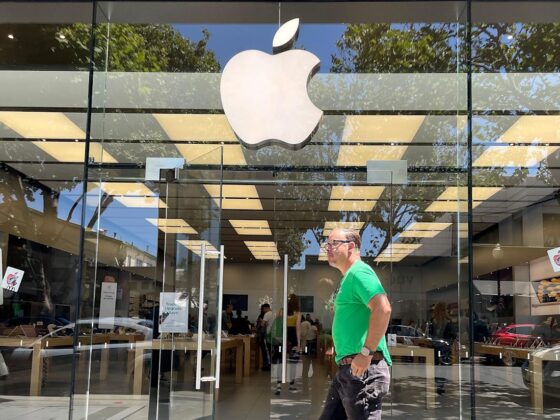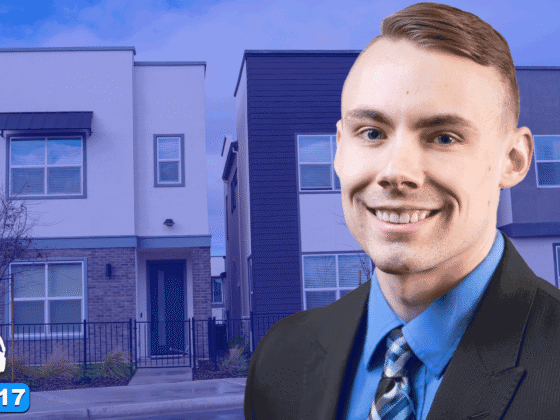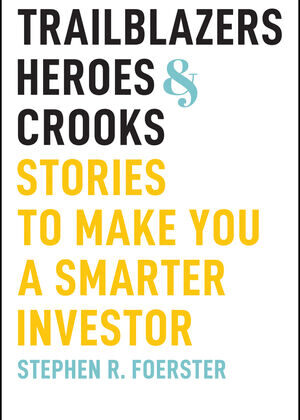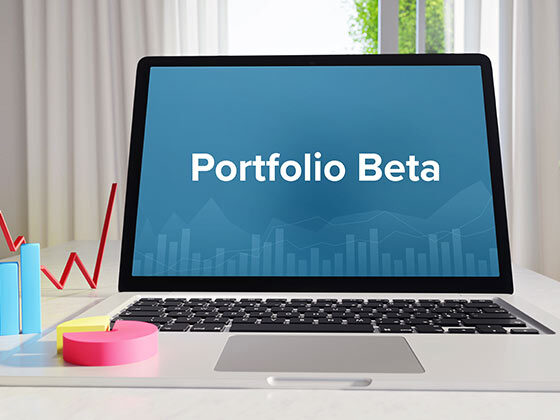Dave Meyer and Kathy Fettke reveal their current real estate investment strategies, including the assets and markets they think will have the best values for the rest of 2025. Dave and Kathy emphasize the importance of securing fixed-rate financing in today’s volatile interest rate environment, warning that commercial loans may be risky with uncertainty around the future of Fed independence and the rising national debt. Later in the episode, Dave explains why hard assets like real estate remain excellent hedges against potential currency devaluation, and how properties can turn inflationary environments into advantages for investors.
Dave:
We’ve been saying that it’s time to buy. So now it’s time to talk about what and where to buy. Of course, different investors will have different opinions, but everyone needs to be informed in this rapidly changing real estate market. Hey everyone. Dave Meyer here back for another episode of On the Market. And today I’m joined by my co-host and friend Kathy Fettke. We are both really excited right now about some new investing opportunities we’ve seen recently that feel sort of different from the properties that have been available to buy in the last couple of years. I’m personally fresh off an investing trip to the Midwest where I saw much more interesting small multifamily inventory than I’ve seen honestly in four or five years. Kathy is adding to her apartment portfolio and working on build to rent projects. So today we’re going to talk about why we like these particular opportunities and we’re especially going to focus on how to finance them in an uncertain future mortgage rate environment. Hey Kathy, how are you?
Kathy:
Hi, I am great. Good to see you. I can’t wait to hear about your recent trip and tour.
Dave:
Yeah, it was fun. For those of you listening, Henry and I went on a cashflow roadshow. We’ve called it. We’ve been talking about doing this for so long and we did a show a couple of years ago maybe where we were picking markets we liked and Henry said he liked Racine, Wisconsin, and for some reason he and I are always talking about it. So we actually went and we started, we drove around Milwaukee, Racine, went to Chicago, went to Indianapolis, went to Madison, Wisconsin. We had a great time. Have you been to that area?
Kathy:
Definitely Chicago, but not Wisconsin. I need to get there.
Dave:
Yeah, we had a great time. Really interesting real estate markets there. We went to Madison, which is one of the more high appreciation, high growth kind of areas, less cashflow, but really fun city a lot going on. Went to Milwaukee, which people might not know this, but I think it’s the hottest housing market in America right now. Some of the hottest home price appreciation, but also some of the hottest rent growth in the country as well. A lot of economic growth there. And then there’s this whole area between Chicago and Milwaukee. It’s like a two hour drive. If you haven’t been to this area and you drive down this road and it’s just like Amazon distribution, Wayfair distribution, just like all of this stuff going on there, that’s super exciting. So we had a great time there and I highly recommend to people if you’re looking for a market to invest in. From what I saw, Wisconsin, it offers a little bit of everything each market. Some of ’em were more cashflow centric, some of were more growth centric, but I was excited about everything I saw there.
Kathy:
My team is always looking for the next hot market. That’s what we are obsessed with. And it’s just north of Chicago, but maybe doesn’t have some of the same issues that Chicago has in terms of high taxes. It may, I don’t know, but our team went and checked it out. We found a good team there. The prices were right, but they just didn’t like the city, so maybe they didn’t go to the right neighborhoods in the Milwaukee area, but they just didn’t see a lot of what we want to see, which is job growth, population growth and so forth. And I’m not sure if you’ve got the stats on that, but we didn’t pull the trigger and we were wrong on that one for sure.
Dave:
One of the things that sort of drove me towards Milwaukee, which was pretty interesting, was I saw this article, it was in the Wall Street Journal a couple days ago, and it was showing about where young college graduates were finding jobs and Milwaukee was one of the top five, which I found really encouraging. The other ones were places more. You would suspect it was like Raleigh, there were some places in Texas and California, those kinds of places. But Milwaukee, it seems like jobs are starting to move there just because super affordable and there are tax incentives there, but it’s definitely, I wouldn’t call it a super economic growth city just yet, but it does seem like a lot of economic activities moving in that direction from Chicago, sort of up towards Milwaukee. It’s just more affordable. Taxes are definitely better there than they are in Illinois. So there’s a lot of good stuff there.
Kathy:
Maybe that was just the issue that my team saw is it’s too early maybe, but if you are a business owner or you own property in Chicago with more and more tax increases, there is definitely incentives to go somewhere nearby
Dave:
For sure. And I would say if you’re looking for more cashflow, some of those markets are definitely cashflow positive. We went to Racine and Kenosha and just saw on market cashflowing deals. Some of them were stabilized. You could just buy them right now and they would cashflow some of them, you could do some value add too and get them even better. So I thought that was encouraging for people who are looking for that.
Kathy:
I can’t believe I forgot this date, but I actually did invest in Kenosha. Oh really? I haven’t been there, but one of our employees had some credit issues and really found an amazing deal on a property there and needed us to do financing. So we funded his deal, he fixed it up, he lived there for a year and sold it and we split the profit and I think we did make a 25% return on that one. So I hadn’t been there, but he was telling me all about the area and the beautiful lakes around there.
Dave:
The lake was beautiful. That was really cool to see. But lucky at you, you’re investing so much, you don’t even remember where
Kathy:
It was probably five years ago. But yeah, I wait. That does sound familiar. That’s
Dave:
Awesome. Yeah, I mean, I think for me, the cool part of the trip is that it sort of solidified what I’m going to be looking to buy the second half of this year.
I’ve bought a lot of duplexes and that are, I don’t know if you’ve done this, these old cut up old Victorians and they could be very profitable, but they’re kind of a pain in the ass to manage maintenance can be really hard on them. And so the idea of these built to rent or specifically like purpose-built two units or four units, even if they’re not recently built, they were built to rent at some point. I find that really attractive at this point in my career where I’m trying to find lower maintenance newer builds than the 1900 cut up old Victorians that I was investing in Denver for a long time.
Kathy:
That wasn’t built to be a multifamily, but you just explained our last syndication, which is build to rent duplexes in the San Antonio area. It is so much easier to manage something new because like we said, it’s built for that purpose.
Dave:
Are you selling those to investors or owners? I mean everyone’s an investors. Is it mostly owner occupants?
Kathy:
No, most of our build subdivisions are selling retail to homeowners, but this one is our first. We’re building it simply to hold it. Oh, cool. And rent out those units. Yeah, we’re keeping it. Oh, nice.
Dave:
Okay, cool.
Kathy:
But the nice thing about build to rent in that scenario is let’s say the market changes or the investors decide they want to sell, the plan is to sell in five to seven years, but the investors might want to keep it if it’s cashflowing so well, why sell it? But if we wanted to, we could sell off some units. The apartments obviously are great, but in a horizontal apartment, basically a build to rent community, there’s no rules around that. You could sell some off if you want, and have some retail homeowners in there or sell some units to investors or keep it so it’s new enough that it makes sense to me to keep it refi, get everybody’s money back, but we’ll see what the investors decide In five years.
Dave:
I want to hear more about what you are gearing up to buy in the second half of this year. But we do have to take a quick break. We’ll be right back. Welcome back to On the Market. I’m here with Kathy Feki. We’re just catching up talking about the market and what we are both doing with our portfolios. I told you a little bit about what I’m targeting, which is sort of purpose-built two to four units probably in the Midwest. I’m going to do some other stuff, but that’s what we’ve talked about so far. Kathy, what’s exciting you in the market these days?
Kathy:
I’m a little too excited. Dave. Part of me was to retire, but then there’s all these opportunities. Okay, so you are going to retire. I can’t, I don’t know if it’s possible
Dave:
Deserve it, but I just, I’m skeptical that we’ll see the day.
Kathy:
It’s probably not going to happen, especially after my conversation yesterday. So we are launching a multifamily fund
Because my new syndication manager, he’s been with us for a year and a half now, but that is his background and he has built multifamily. He has renovated, he understands it’s much better than me. But the deals that we’ve looked at, you have to move quickly when there’s a good deal in any kind of real estate, you can’t sit around and wait and try to negotiate. You got to jump, you got to pounce quickly. So for a syndication, if you’re raising millions of dollars, you don’t have time. It takes a month just to get the documents in order, and then you need to work with the investors and make sure they understand the deal. So we’ve missed out on some really good opportunities for that region. You just basically have to have cash. So we are starting the multifamily fund so that the cash is ready so that when we see the next deal, we can pounce.
Dave:
So what has changed? You’re just seeing values go down enough that start to feel like the cash flows there, the upsides there. What has changed from, I don’t know, six months ago to now?
Kathy:
The deals are getting better, the prices have come down quite a bit. I think maybe sellers realize I can’t hold on forever and banks are not playing the extent pretend game as much. The bigger stuff, the institutional grade apartments, those are getting picked up by companies who do have millions if not billions of dollars of cash. So we’re not trying to compete with the Blackstones of the world. That’s not, but the smaller stuff, the family owned under 100
Speaker 3:
Units.
Kathy:
That’s what we are seeing the opportunity in. I think they’ve just, how long can you be negative cashflow? How long can you feed a property?
Dave:
Yeah, that distress is definitely starting to happen. I think on a national basis, multifamily is down 15 to 20% off peak prices pretty significant. And in certain markets it’s way more than that.
Kathy:
30, even 30,
Dave:
Yeah. Are there specific markets you’re targeting?
Kathy:
There’s so much opportunity, but we’re kind of still focused in what we’ve been doing, which is the Southeast and Midwest.
Dave:
I mean Southeast, it’s like an informed bet that you’re making is these are overbuilt markets. There’s stuff that’s happening there that’s pushing prices down, but they have super strong fundamentals. So predicting and counting on a rebound is a good bet to make, which is super interesting. So that makes total sense to me. But I want to talk to you about commercial debt because that’s causing this, and I want to ask you about how you’re planning to finance some of these acquisitions to help mitigate that risk. This is something I’ve been thinking about a lot. So if you’re going to go out and buy a hundred units right now, how are you financing this? I may have a controversial take on this and I want to hear what you think.
Kathy:
Well, I’ll just give you an example of the build to rent community, which isn’t an apartment, but it is commercial debt. So when we underwrote that deal and my underwriter is excruciatingly conservative, painfully such that over the four years everything was turned down. Even deals people are bringing me today, it’s always a no, I just kind of expected. So with our build to rent, it was a yes, and one of the reasons was the numbers still worked when he underwrote it to a 9% rate, and that’s on construction. And then the refi at a high rate too. Now the construction loan came in the high sixes. So already off the bat we’ve saved ourselves hundreds of thousands of dollars.
Dave:
Wow. Construction loan in the sixes.
Kathy:
Yeah,
Dave:
That’s pretty darn good.
Kathy:
Our partner in Texas has banking relationships and it is really good. It’s shockingly good, but the deal would’ve still worked at 9%. So now we get to go back to the investors and say, well, we got a few hundred thousand dollars that we might just be able to give right back to you, or at least have in reserves. So it’s the same with Multifamilies. When we’re underwriting it, it’s going to be very, very conservative. We’re keeping the LTV at 65%. So we’ve talked about 65 to 70%, but low enough we’re not going to be doing those bridge loans that got everyone in trouble. The bridge loan is sort of a, I guess I could explain it like a second lien. It’s a higher interest rate and they’re not very forgiving
Dave:
Short term.
Kathy:
So a lot of people got in trouble with those. So we’re not, we’re going to raise enough cash that we’re not going to have to do that. We could do the renovation with the cash and it’s not going to be this knockout of the park thing that multifamily was doing in 2021, but that’s okay. People aren’t expecting that.
Dave:
And so when you refinance it, are you getting a balloon? Is it a traditional commercial loan? Traditional,
Kathy:
Yeah, traditional commercial loan.
Dave:
Okay. That’s awesome that you got that commercial debt. My fear about commercial real estate right now, I went into 2025 being like, I’m going to just buy for myself 20 unit something somewhere, and that will be a great retirement piece for my portfolio. And I’m still interested in doing that. But in the recent months, I’ve just gotten very wary of long-term interest rates. I am fearful that 3, 5, 7 years from now, interest rates are going to be higher than they are now. And I know not a lot of people think that, but I am fearful of that. And so I worry about any sort of variable rate debt, even if you’re getting a good deal right now for me, as someone who wants to hold onto this for 20 years, I worry that I would have to refinance at a much higher rate. I’m wondering if you think about that at all or since you’re syndicating, you’re going to try and sell this off in a couple of years or how you think about that risk.
Kathy:
Yes. The plan is to sell it off. Well, we’re still in a fixed rate. So I love Ken McElroy and he is the apartment king, right? And he believes that you should just always hold. He holds everything. So that is a different business plan and there are commercial loans that you can get for that business plan.
Dave:
That’s kind of what I’m thinking personally, getting a fixed rate commercial loan, even if you have to pay a higher interest rate.
Kathy:
But I mean, I have been a single family investor for over 20 years and for that very reason because you can lock it in.
Dave:
It’s so great.
Kathy:
It’s so great, and you can get up to four units, so you’re kind of in multifamily, right?
Dave:
You can just take so much risk off the table. Just so much risk.
Kathy:
It really does. And with every loan we’ve done, rich, and I’ll look at each other and be like, oh, we could get such a better rate if we just do a shorter term, an arm or something. And then it’s like, yeah, but then we can sleep at night.
Dave:
So
Kathy:
I think you can absolutely retire on the plan that makes you feel better, which might be the one to four unit plan and just sleep at night knowing that you don’t have to worry about it when you’re doing long-term unless you can get a commercial loan that is fixed for a much longer period of
Dave:
Time. I think it’s exactly what you said. You just have to match the debt to the business plan that you have. I invest in syndications that use short-term debt in commercial properties because a value add project that’s going to sell in three to five years, like that I’m okay with, but for me, what I’m looking to acquire right now as I’m trying to pick up 10 to 20 units in the next whatever, six, 12 months in multifamily that I’m going to hold onto for 30 years. And to me, yeah, there’s a chance cashflow might be better in the next seven years if I take a variable rate, but frankly, I’m going to keep working the next seven years. I don’t need the cashflow. I would rather just lock in a rate and know that that is my rate until I retire, and then it’s going to be paid off.
And that’s that. And I’m in a fortunate financial position where if that means I have to put 30% down or 35% down to carry it in the short term, I’m willing to do that. But that just better suits the business model that I’m looking for for this particular unit. That’s what this group of properties I’m trying to acquire, that’s the purpose it serves in my portfolio and I need to find the right debt for that. And I just wanted to call that out because I think a lot of people are looking at multifamily and seeing exactly what Kathy’s saying and seeing, hey, values are down, and that is true. There are good deals now and there are going to be a lot more good deals. I think that’s just clear. But don’t just jump into it and make the same mistake that some of these operators made, which is just taking on short-term debt without considering how risky debt can be when it’s variable rate in commercial real estate. It’s just a different, more risky endeavor than residential.
Kathy:
And all you have to do is do it once to learn that very, very hard lesson, which is why I didn’t do it over the last four years when everybody else was, because I did it in 2008, so I know how much that hurts.
Dave:
You had a variable rate?
Kathy:
Well, yeah. I wrote about it in my book, my first book Retire Rich with Rentals that I got a great deal and a growth market right outside of Knoxville, right? Pigeon Forge.
Speaker 3:
Yeah.
Kathy:
We could see that massive growth 20 years ago, 25 years ago happening in that area. So Rich and I got three homes on the way that I think we paid one 50. I mean they’re probably half a million today, maybe more. And we got into construction loans and I wrote about it in the book, so I’ll just say it here. I was a mortgage broker at the time. I didn’t read the fine print. I thought I got a construction to perm, which means that it would automatically turn into a permanent loan. I didn’t. I just got a construction loan. So when 2008 happened, those loans, they became due. They balloon, they’re due.
Speaker 3:
That’s what they did.
Kathy:
And the market didn’t allow you to get any more loans over 10. It used to be before that you could get an unlimited number of investor loans. So here we are. It was so hard to find any money anywhere. This was before I was syndicating and we were just like, we have to come up with 600,000 cash now. Gosh. Which we didn’t have.
Dave:
Oh no.
Kathy:
Or hand ’em back. So these beautiful homes where we put a bunch of money into ’em, we just had to hand back to the bank. It was very hard. So once you’ve done a short-term balloon note like that,
Dave:
You
Kathy:
Learn. Sure, you learn.
Dave:
It’s super risky. And I mean I see people do it also in residential with seller financing too. Everyone loves seller financing, which is great, but there’s, there’s risk there too. So I really recommend if you want to get into this stuff, understanding it. Actually in my book Real Estate by the Numbers Jay Scott and I wrote, I know it’s boring stuff, but understanding how loans work is incredibly important to being a real estate investor. So I highly recommend it. Just read one chapter, it’s called The Anatomy of a Loan. It will help you understand the different elements that go into them and how to sort of figure out what loans are right for you, given what you’re trying to buy and what you’re trying to accomplish. So obviously Kathy, you’ve learned your lesson the hard way, but hopefully you all can learn your lesson in easier way. Don’t have to go through that at all. Just listen to what Kathy’s saying right now.
Kathy:
Understand the debt. That is so incredibly important and so many passive investors over the past decade had no idea. They’re just like, Hey, we’re invested in an apartment and that’s all they know. So understanding the debt structure is incredibly important. Just like with that second apartment that we owned. It was the debt. I mean, we sold the building for millions more and the lenders got all the upside. It’s
Dave:
The worst. Yeah.
Kathy:
Yeah.
Dave:
I think understanding the debt is super important. Honestly, it’s hard, but I think it’s an important lesson for those of us who started in the last 15 or so years, just seeing the changes in interest rates are super tough and they’re super hard to predict. And a lot of people didn’t see rates staying high this long. A lot of people have assumed rates are going to go down. There’s a chance they do. I think there’s a chance in the next couple of years they go up. We don’t know. And so that introduces risk into being a real estate investor. The asset class is still great. Prices still go up. We’ve seen that in the last couple of years. You can still make money in this. You just have to be really careful with debt. We talk about this all the time. There’s good debt, there’s bad debt, and sometimes variable debt can help you hit a grand slam. But think about your own risk tolerance a lot before you take out some of these things, especially in this cognitive environment. But we do have to take one more quick break. We’ll be right back. Welcome back to On the Market. I’m here with Kathy Beckie.
Kathy:
Dave, you’ve been really, really very accurate on your predictions for rates. So why do you think they’re going to be going up over the next 10 years?
Dave:
I’m scared. Basically, I guess there’s two big concerns. One is the idea of Fed independence. We’ve seen President Trump, Jerome Powell have been arguing a lot yesterday.
They were fighting on live TV if you watched that. And I think there’s arguments for and against Trump wanting lower interest rates. I think he wants to stimulate the economy. He wants to lower the interest rate on our national debt. So our total debt service goes down and Powell wants to protect against inflation. But regardless of which side you’re on that the fight between the president and the Fed I think is a really detrimental thing. And we’re seeing that in the market because traditionally there has been something called Fed independence. Some people don’t agree with this, but I think it’s really important that the Fed operates independent from the political entities. And the Fed is by no means a perfect entity. I’m not saying that at all.
But one of the reasons why the US gets low interest rates like we do, is because global investors just believe in the US system. And if they start thinking that there’s going to be political motivation for changing interest rates and in the bond market that can push bond yields up, even if the fed cuts rates. There was an article in the Wall Street Journal today about how even if Trump does Fire Powell, he might not actually get what he wants. He could fire Powell, they can cut rates and mortgage rates might go up. That is actually a relatively realistic scenario. And so
Speaker 3:
That’s
Dave:
One thing. But the main thing is really the debt. And I think you and I have talked about this before, but the US debt is not an acute issue. It’s not like we’re going to default next week, but it is just this long simmering issue because more and more of the US budget is getting consumed by our interest payments. It used to be a couple of years ago, it was like 7%. Now it’s 18%. That’s crazy. Almost one out of every five tax dollars that comes into the United States goes out towards debt and we’re actually even taking out more debt to pay for some of our debt. And so there’s only two ways that this goes. There is austerity measures where we cut spending, increase taxes or some combination of the two and get the debt.
Kathy:
And we know how hard that is to pull off.
Dave:
Right? Well, that’s the whole thing. So that’s the logical thing, right?
Kathy:
Stop spending.
Dave:
Yeah. Some people say it should be stop spending. Some people say it should be higher taxes. Either. Both of those in the last 25 years in the United States have proven impossible. Both parties, neither of them have been able to reduce the deficits. They just get bigger and bigger and bigger. There is another option in a government we have, which is printing more money. That’s the other way to service the debt, is they just print money and service the debt with that. That is a nightmare scenario for bond investors. That is the last thing that they want. And bond yields, if that starts happening, are going to go up and that’s going to push mortgage rates up. And so you kind of have to ask yourself what’s the most likely scenario given the last 25 years of our political environment? This is not both parties do it. Go look it up. Both parties contribute to the deficit.
Kathy:
Absolutely.
Dave:
And so if no party’s going to seriously take care of our debt, someone’s going to turn on the money printer, right? That’s kind of what worries me the most. Right?
Kathy:
Well, they have to.
Dave:
Yeah. So that’s the only scenario and that’s going to push up long-term rates. And I’m not saying that’s going to happen this year or next year, three years, but when I think about variable rate debt, I’m like, do I want to refinance seven years from now or 10 years from now? I don’t know what that interest rate environment looks like. It seems very, very unclear.
Kathy:
Those fixed rates are gold, everyone. It is gold. And that is what you just said is something I’ve believed for since I started investing in real estate is a hard asset, is a hedge against that,
Speaker 3:
Against
Kathy:
This funny money that just could get printed. Now that was never allowed, never allowed when my parents were my age. No, it was like a big, big, it would be frontline news.
Dave:
Now, how many times did it last 12 years have we raise the debt ceiling,
Kathy:
Both parties. It’s just constant. It’s embarrassing and sickening. And then you try to do something about it and everybody’s mad. And so it just like this year just had me realize there is no way you’re going to raise taxes significantly enough or cut the budget enough. It’s just not going to happen. So they’re probably going to take the easy route because there are politicians that do need to be reelected and not make everyone mad.
Dave:
Exactly.
Kathy:
Is print money. It’s the easier invisible tax. And this is what I’ve been teaching for 20 years is it’s an invisible tax and everybody’s like, yeah, free money. Give me more money. I want more things. And what they’re not realizing is that you’re paying for it some way and it’s in inflation. So it’s more and more and more and more important than ever to get into hard assets. Whether it is real, whether it’s gold,
Dave:
Bitcoin
Kathy:
Or Bitcoin. Rich bought $2,000 worth of it and I was so mad at him. And while he was right, it’s done pretty well. But yeah, I mean the thought that you’ve missed the real estate boom is absolutely incorrect because they’re going to keep printing money, which doesn’t increase the value of the particular asset. It’s just that more dollars are there to chase it.
Dave:
That’s right. I think that hard assets are the only real solution here. And especially with fixed rate debt or own for cash. If you can own it for cash, that’s great, but if you have fixed rate debt actually leveraged when there is inflation actually can be good for you
In an inflationary environment. And so I think to me, that’s why the stuff that we’re talking about buying makes a lot of sense. I do want to just explain to people though how this mechanically works. I know this is nerdy, but I just want to explain that inflation, everyone hates inflation. It’s not great, but bond investors really hate inflation. And that’s why I think the risk is there is because if you’re buying a bond, you’re lending money to the US government for a fixed amount of time for a fixed interest rates. So right now you can lend the US government money for 10 years at a four and a half percent interest rate roughly. Right? That’s cool. They’re going to pay you back that interest over time. But if they start printing money, the value of every dollar that they are paying you back in the future is actually worth less.
They are devaluing the dollar. And so that means you’re basically locked into this contract with the US government where they get to pay you less and less every year. And that is the opposite of why you buy a bond. You buy a bond as a store of wealth. That’s the whole idea of it, is that you can maintain or modestly grow your money above the pace of inflation. And so if bond investors start fearing inflation, they’re not going to lend money to the US government at 4.5%. They might lend it at five point a half or six point a half or seven point half percent. We’ve seen this in the past. This is not fantasy. This has happened in many countries and in this country. And so if you look at that, there is more risk now I think than in previous years that bond yields on 10 years could go to six. They could go to seven. That might mean we have eight and a half mortgage rates. That could be 9% mortgage rates. I don’t know. And again, I’m not trying to fear monger, but I am saying, and it sounds like Kathy agrees that at least you have to acknowledge that risk is there. Whether it happens or not. The risk that that could happen is very much real. And for me, I want to hedge against that risk.
Kathy:
Absolutely. Yeah. Good stuff.
Dave:
Well, now that we’ve terrified everyone, I dunno or shown them an opportunity,
Kathy:
But yeah, when you look at it from that perspective perhaps where interest rates are today, you might look back and go, wow, you got a six and a half percent rate.
Dave:
What I was thinking about that yesterday. I was like, maybe we’re going to look back and be like, yeah, you got a five and a half. You lucky dog. I know. Of course everyone will love the three and a half still, but it might not look so bad.
Kathy:
We might be sitting in a time when it’s a really beautiful thing and an asset to have that. So
Dave:
Totally. It’s
Kathy:
A good, really good perspective.
Dave:
Yeah, for sure. Well, this was fun. This is a great episode. Just Kathy and I hanging out, I’d love to know if you guys like these kind of episodes. We haven’t done something like this in a long time, but I had a great time. I thought we covered a lot of really good topics and shared some good insights. So let us know what you think of this episode. Kathy, thanks for being here.
Kathy:
Thanks. It was like just being at a deli with you is what we’d be talking about.
Dave:
That’s the idea. Thank you all so much for listening. We’ll see you soon for another episode of On The Market.
Help us reach new listeners on iTunes by leaving us a rating and review! It takes just 30 seconds and instructions can be found here. Thanks! We really appreciate it!
Interested in learning more about today’s sponsors or becoming a BiggerPockets partner yourself? Email [email protected].

